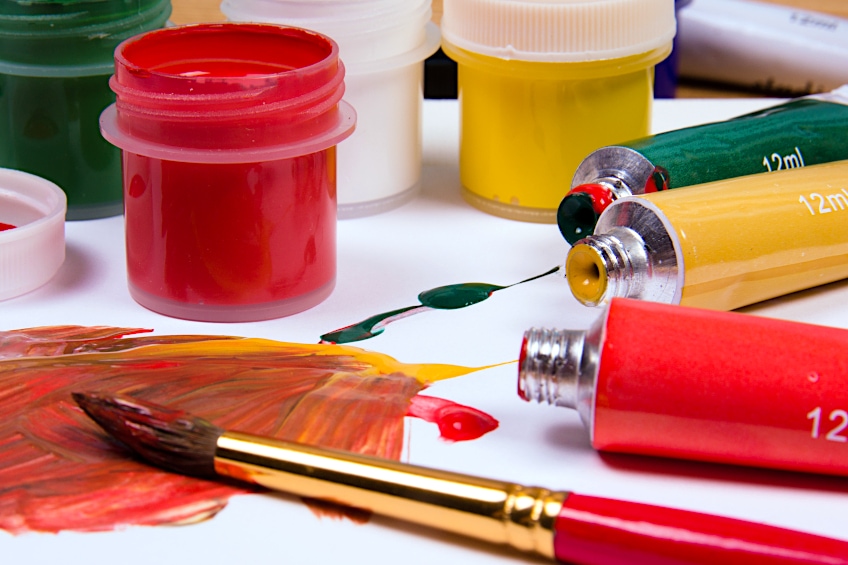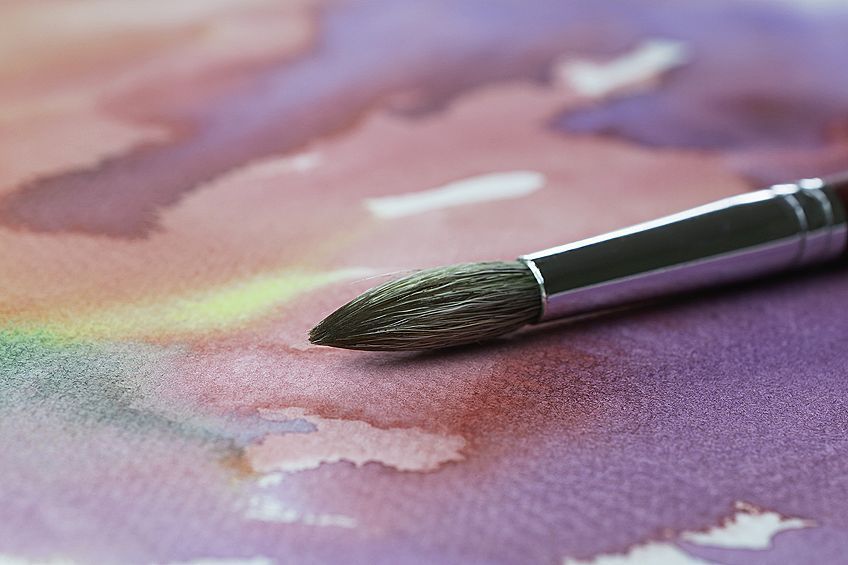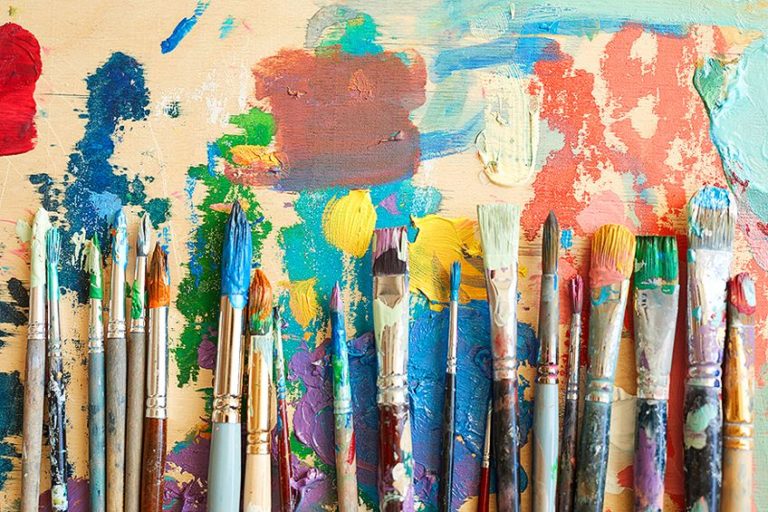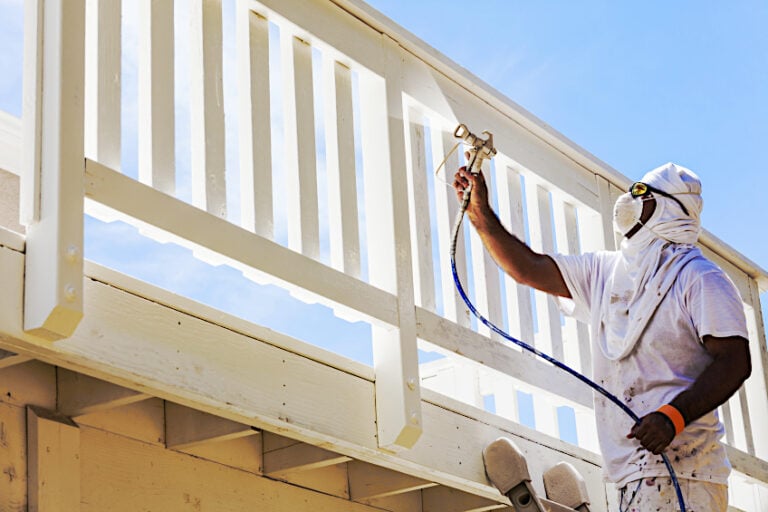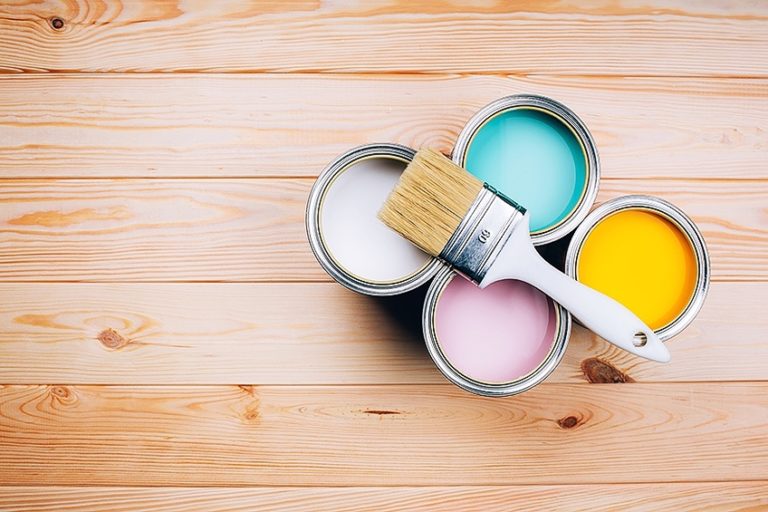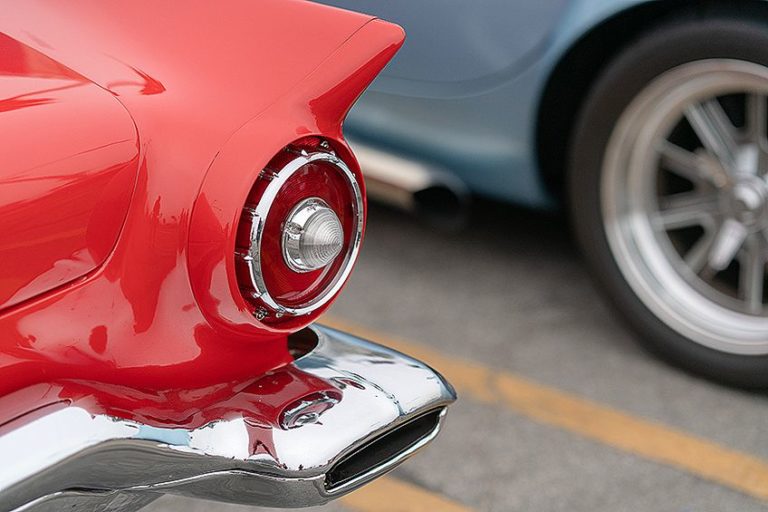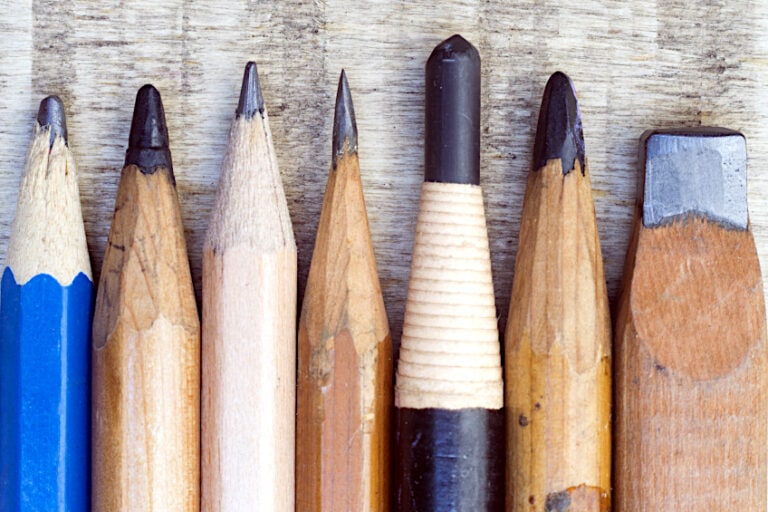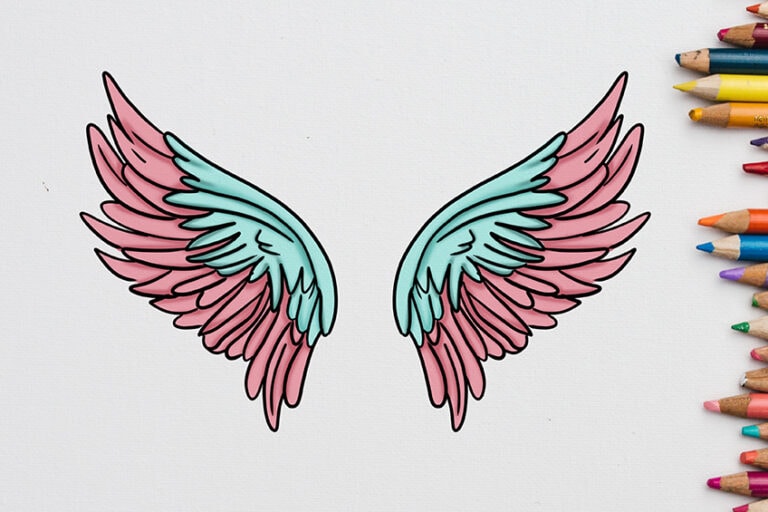Gouache vs. Acrylic – How Acrylic Paint Differs from Gouache
This post may contain affiliate links. We may earn a small commission from purchases made through them, at no additional cost to you.
No matter where you are on your art journey, there is always room to learn another skill, technique, or medium. There are so many ways you can create art, and if you have found your passion in painting, there are so many wondrous mediums that you can paint with. Take gouache paint for once! What is gouache paint? Is gouache watercolor paint? What is acrylic gouache? You will find that out throughout this gouache vs. acrylic tutorial, where we will be describing the difference between gouache and acrylic paint. We will be discussing how to use gouache paint, like acrylic gouache, as well as elaborating on what gouache paint is used for. If you are unable to decide and want to know all about gouache vs. acrylic, this is the right tutorial for you!
Differences Between Gouache and Acrylic
Gouache vs. acrylic – in order to find which paint would be best for the artwork you wish to create, the best is to understand each paint down to its core, because many differences between acrylic and gouache will stem from there. Let us first take a look at the less popular choice, gouache paint.
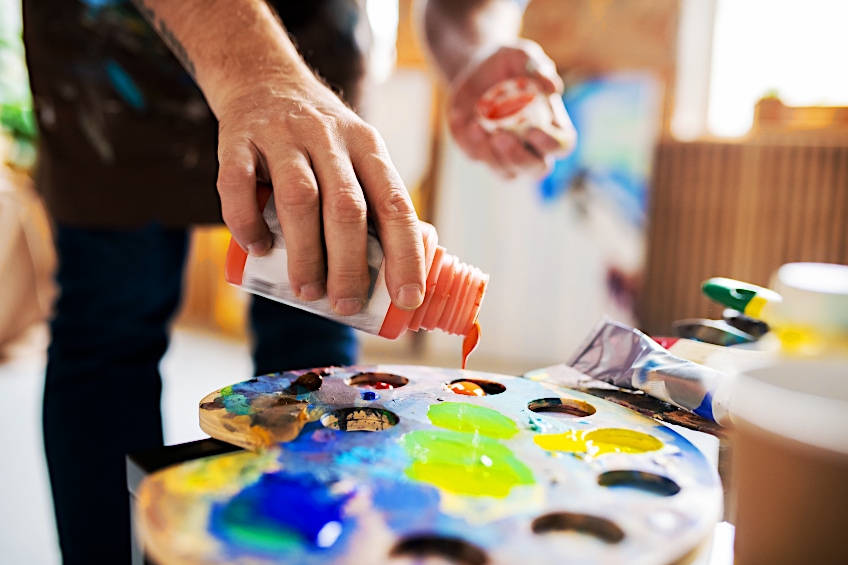
What is gouache paint made of? Well, it is a water-based paint that has a binder known as Arabic gum, and the pigment is suspended between both the water and the binder. Even though both acrylic paint and gouache paints are water-based, gouache paint is more of the water-based family than acrylics, most likely because watercolor paint and gouache e share the same binder properties. One useful thing about gouache paint is that it can be reactivated when dry, which makes correcting mistakes much easier than with acrylic paints, which are unchangeable when dry.
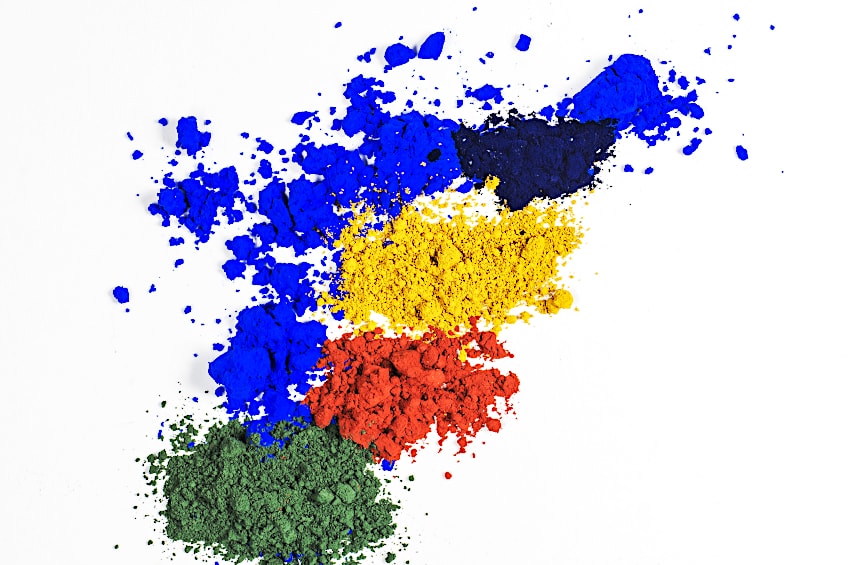
Acrylic paints are also water-based (as we have mentioned), but the pigment for acrylics is suspended in a binder known as an acrylic polymer. The difference is found in the consistency of the pint, as well as the fact that once it has dried, there is no going back. What we mean by this is the fact that it cannot, by any means, be reactivated. Acrylic paints are synthetic, but this also means it is designed with versatility in mind, which means it can be applied to many different types of surfaces and not just paper.
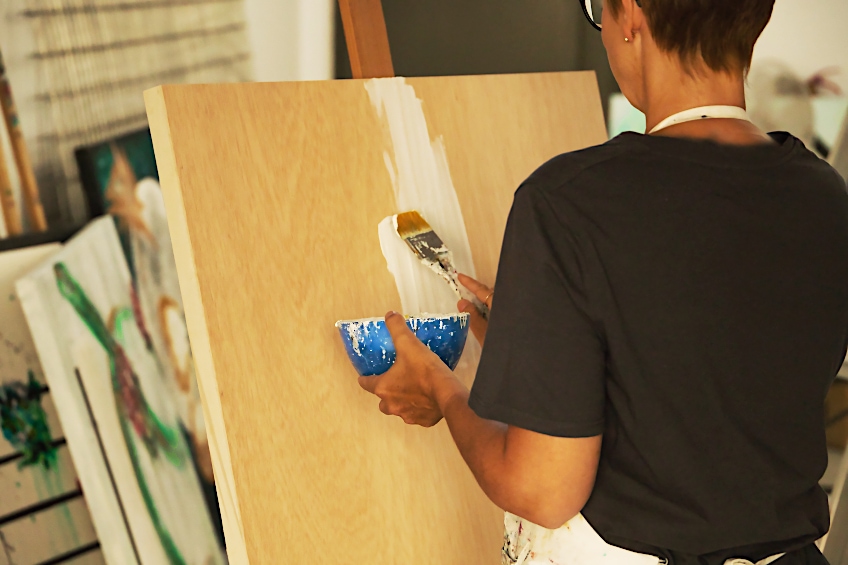
Various Paint Binders
Neither acrylic nor gouache paint are made of the same binding agent. The binder is the glue in the mixture that holds everything together, and by everything, we mean the water and the pigment. Acrylic paint has a binding agent called acrylic polymer, which is a very versatile binder that allows acrylic paint to be painted on multiple different surface tops. What is a gouache paint binding agent, you might ask? Well, in the case of gouache paint, the binding agent is called Arabic gum. Arabic gum allows the paint to be reactivated when it has already dried, whereas acrylic polymer is dry when dried, and there is no reactivation of the paint once the drying process is complete.
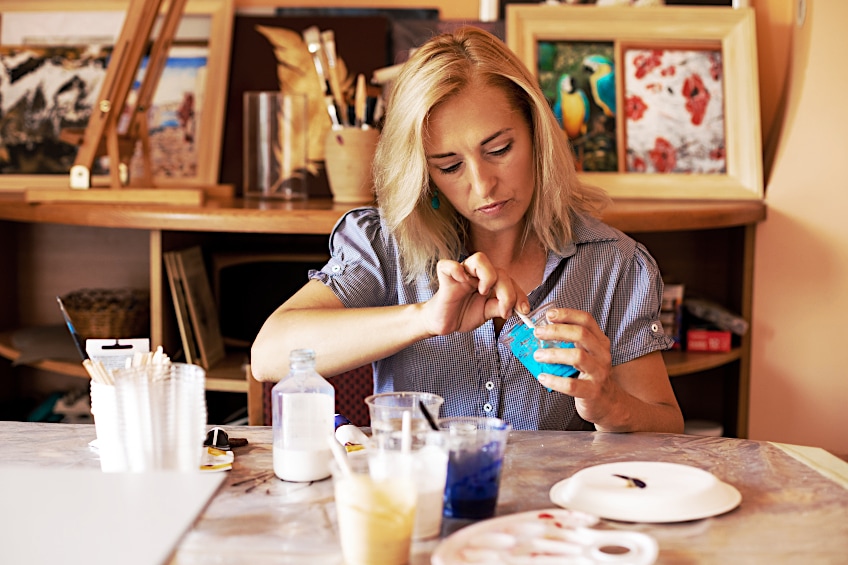
Strength Differences
Acrylic paint is much hardier when it has dried, as well as water-resistant. It is also much more lightfast, which means it will be able to keep the light when it is exposed to too much sun. That means you can have the artwork on display outside, so long as it is undercover. It is only at risk when it is exposed to excessive water, so rain is not its friend.
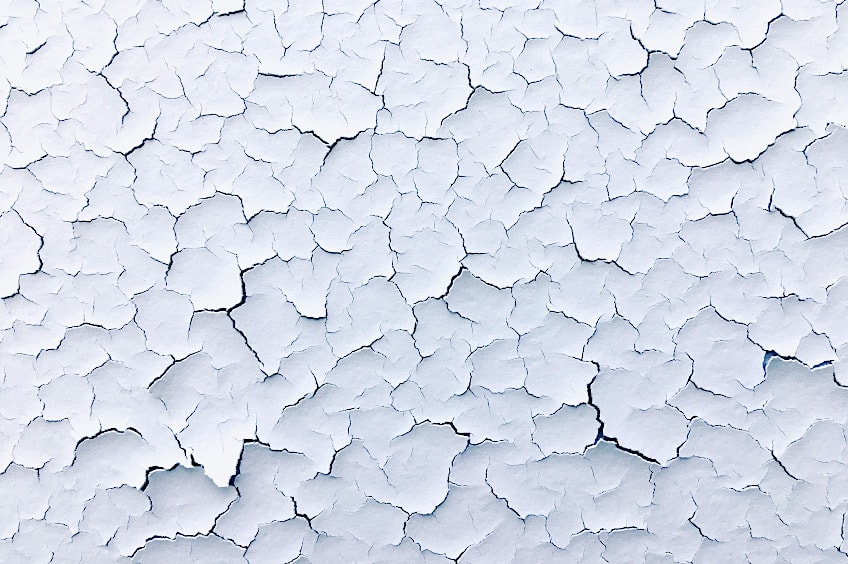
Gouache is not nearly as durable as acrylic paint, particularly because the binding agent allows for the paint to be reactivated once it has dried, which can be helpful when you need to correct a mistake, but not helpful at all when the masterpiece you created gets ruined.
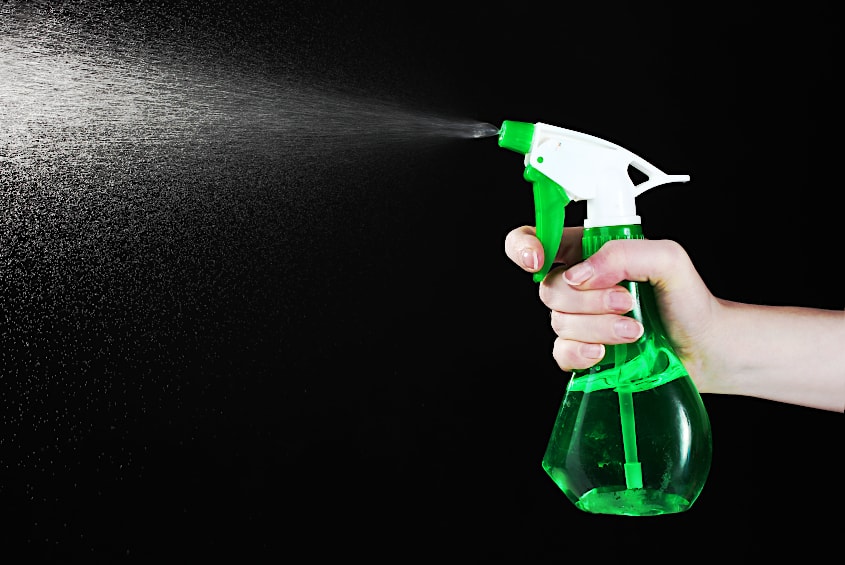
Paint Finish and Texture
If you want the perfect gouache painting, we highly recommend that you paint with thinner layers than you would with acrylic paint. This is because gouache paint threatens to snap quite easily when the paint is too thick. When it dries, it becomes much harder and less flexible than acrylic paint. The added bonus of the consistency of gouache paint is the reactivation of the paint. You can make the paint wet again by adding some water over a certain area and reworking it as you would with oil paint.
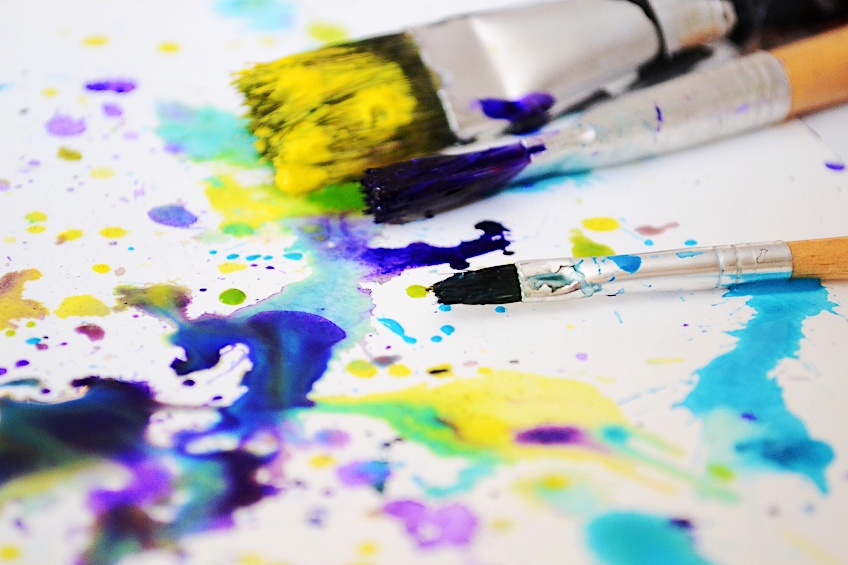
Acrylic paint is so much more flexible when it has dried, which prevents reactivation, but the finish it offers is much glossier. What is gouache paint’s finish? It can be quite matte, which is very beautiful in certain painting settings.
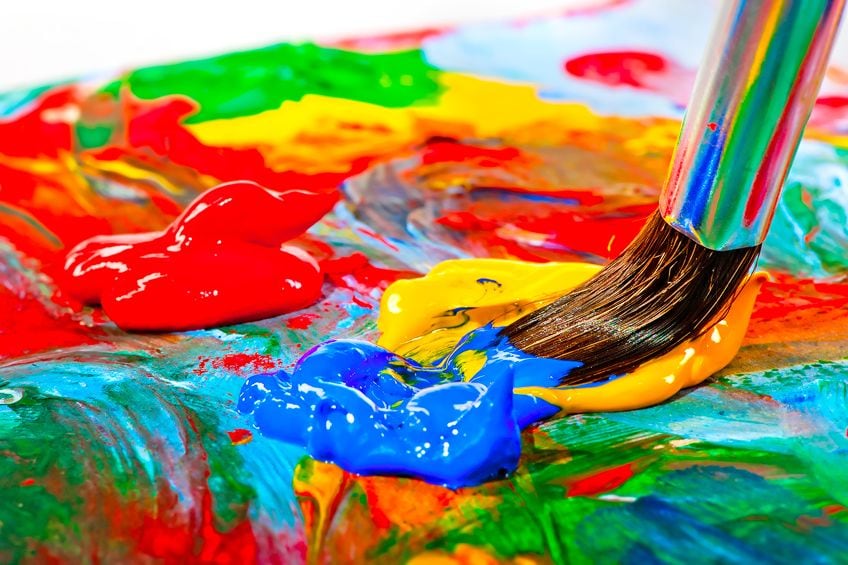
Suitable Painting Surfaces
Gouache paint is not as versatile when it comes to painting on the different surfaces that you can achieve with acrylic paint. Acrylic is designed to be versatile, and this is possible because it is synthetically made. Gouache paint is better when you paint on canvases that are designed for watercolor paints. It can also be used on thick paper.
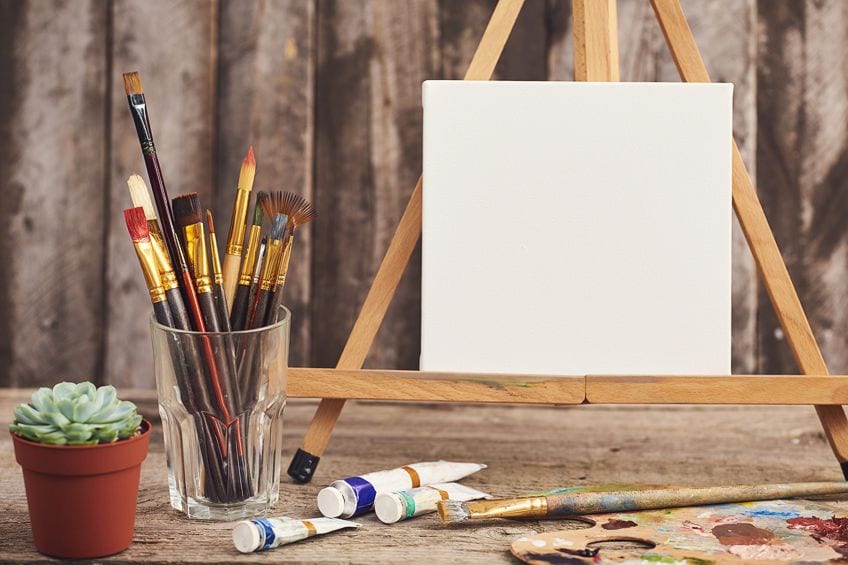
Paint Drying Times
Acrylic paint is quite the fast-drying paint, needing only 10 minutes to 12 minutes. You could choose to add something called a retarder to make it dry faster, but this often ends out with bad results. Gouache takes a bit longer to dry, and can sometimes have you waiting like half an hour.
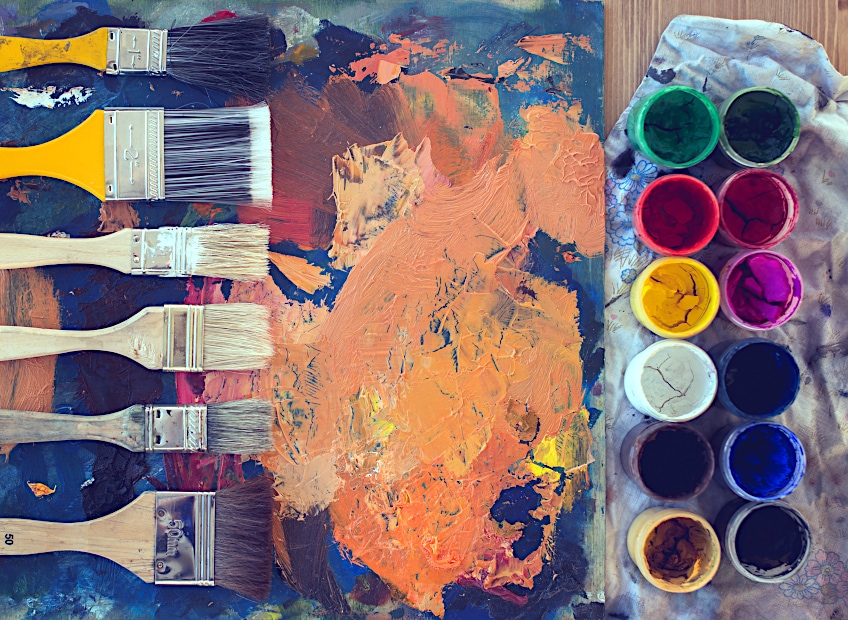
Methods of Application
What is gouache paint used for? The different uses can also help you understand the various methods for application. Typically, the application method is by using a paintbrush. This will help to achieve smoother results, but then you might also use a palette knife that will help achieve a more textured result, which might be better for fine art styles.
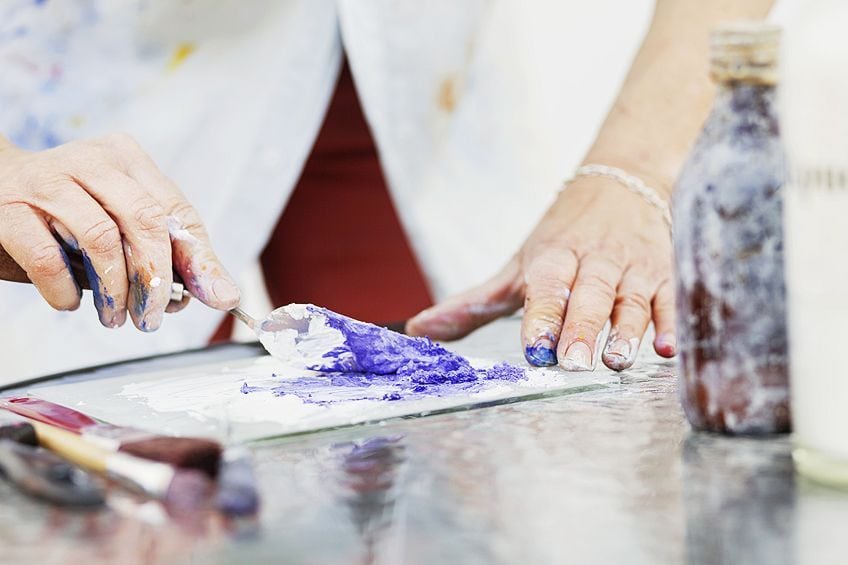
Price of Paint
Generally speaking, acrylic paints are much more affordable. This might be because they are the more popular medium, but it is largely because they are synthetically made in a factory. This makes production much faster. They can produce a lot more of the pint at a fraction of the cost than if it were naturally derived ingredients, like with gouache paint. There are, however, different grades of both types of paint manufactured by different brands. The price in this case is determined by the quality of the paint, which is often determined by the pigment.
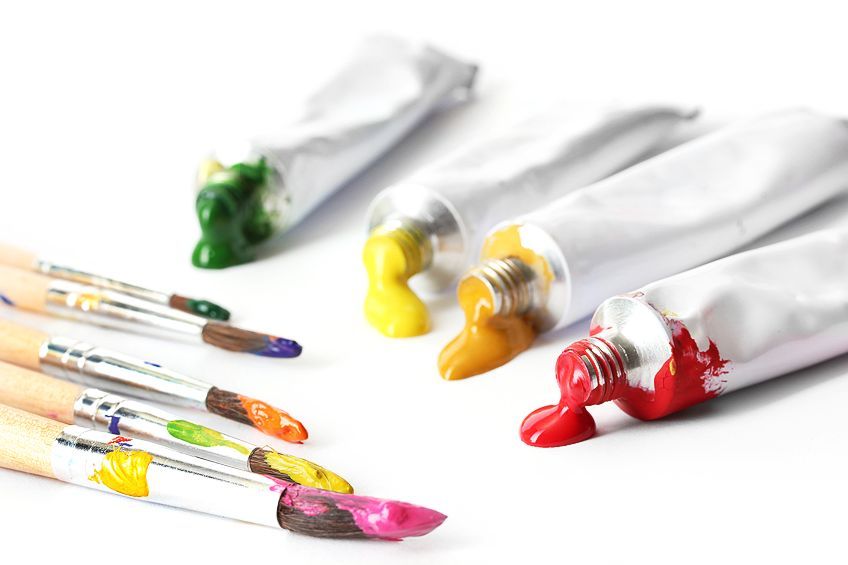
Reactivating Dry Paint
Gouache paint has the amazing ability to be reactivated at any point once it has dried. If you notice a mistake that you would like to correct without having to paint over the whole area just to do so, then these paints are the right choice for you!
Paint Texture and Consistency
When it comes to learning how to use gouache, one thing you must bear in mind is that the paint needs to be mixed before you apply it. But what is acrylic gouache, and how does that get packaged? We will discuss this further in detail later on, but acrylic gouache can be used right away as it is more like the consistency of acrylic paint. Gouache is opaquer than watercolors, but it forms the middle ground between acrylic and watercolors.
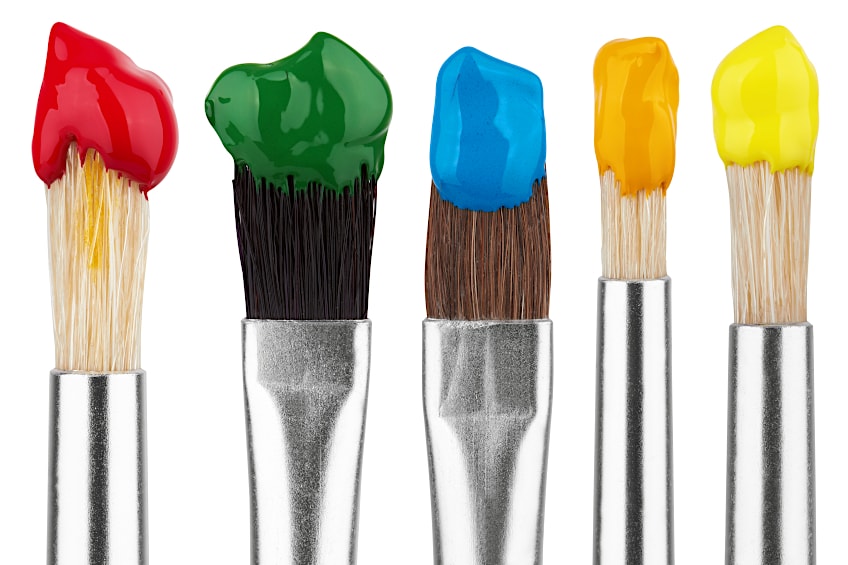
Paint Color Changes
In the same way that acrylic paint changes color as it dries, gouache also changes color as it dries. If we compare gouache vs. acrylic paints, it has been noted that the darker colors tend to dry lighter, while some of the lighter colors can also become darker when they start to dry. A general rule of thumb regarding acrylic paints is that as they dry, they usually take on a darker tone, with some colors typically going darker than others. You should consider this as it is something that you should be aware of, but the reality is that it is often very subtle.
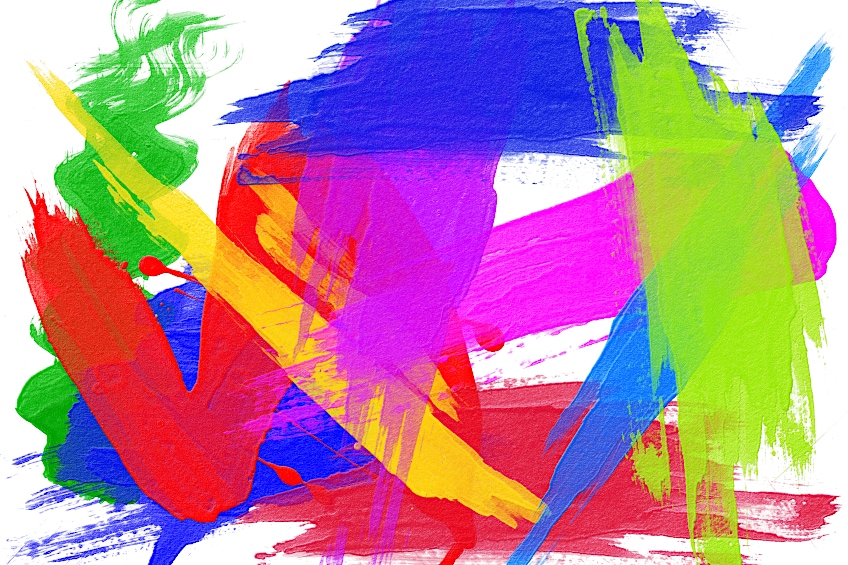
Comparison Table for Gouache vs. Acrylic
Here is a table that we have created for you so that you may easily see the main differences between gouache and acrylic. This will help you to decide whether to use gouache or acrylic paint for your next painting venture.
| Features | Gouache Paint | Acrylic Paint |
| Binder | Arabic gum | Acrylic polymer |
| Water-Resistant | Dissolves in water | Can be quite water-resistant |
| Strength | When displayed the art should be framed, or kept in a safe environment | Framing is not entirely necessary, but it is advisable, especially for those artworks that are based outside |
| Compatible Surface Materials | Thick paper, or paper designed for watercolor art | Can be applied to many different surface materials like paper, canvas, glass, metal, wood, and some plastics |
| Finishes and Textures | If you paint thick layers, they are more prone to cracking | You can apply acrylic paint in thick layers or thin ones for different effects |
| Methods for Applying Paint | Paintbrushes, sponges, or cloths | Many different tools to apply paint |
| Reactivating Dry Paint | You can reactivate the paint to make a correction when you notice mistakes | Cannot be reactivated when it has dried |
| Time to Dry | Gouache blends nicely, but it also dries fast, so you will need to work fast. | Tricky to blend and it dried fast |
| Price | Can be pricey | More affordable, but there are pricey options available |
| Paint Consistency | Creamy consistency | There are various brands that have created acrylic paints in different consistencies. |
| Mistake Corrections | You can correct mistakes by reactivating the paint, even if it is dry. | You cannot correct mistakes without waiting for the paint to dry and painting over it |
| Paint Color Changes | Colors appear lighter when they dry | Colors appear darker when they are dry |
Which Is Superior?
Now that you know what the difference between gouache and acrylic paint is, as well as how to use gouache paint with the different application methods, you might wonder which is the superior medium, gouache paint vs. acrylic paint? The better question to ask yourself would be, which is the better medium to use for the style of artwork you wish to create? No paint is superior to another, it is all dependent on what artwork you wish to create, and what aesthetic it should take on.

For one, acrylic paint might be a bit cheaper than gouache paint, which is definitely an added bonus for many. But, if money is not the object, and your aim is simply to create beautiful art, no matter the cost, this should not affect your choice. What might influence it is that gouache paints, though luxurious in nature, are not as versatile as acrylic paints. They cannot be painted on as many surfaces as acrylic paints can, which can be quite limiting.
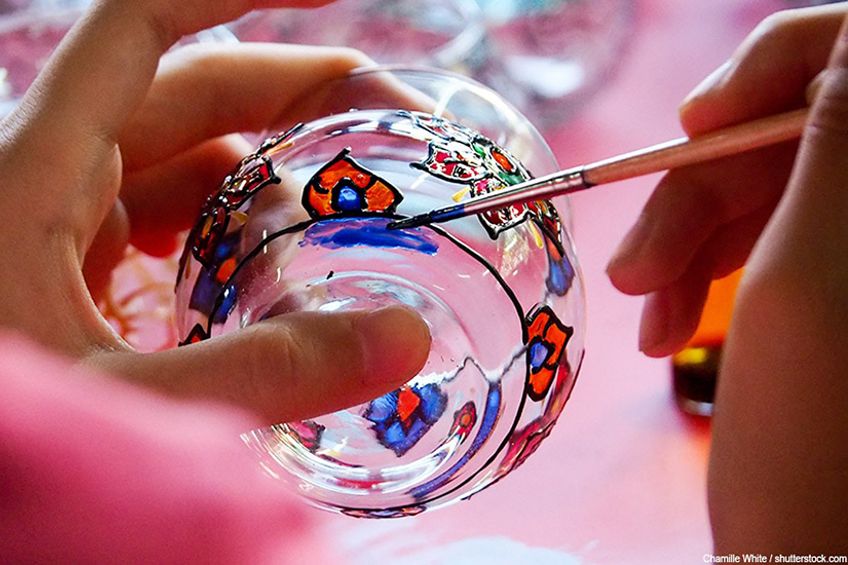
If you are going for a matte finish, acrylic paints are not going to help you there because they tend to be glossier when dried. However, acrylic paint is much stronger when it has dried, as well as much more water-resistant, so it will last a lot longer whilst being handled frequently.
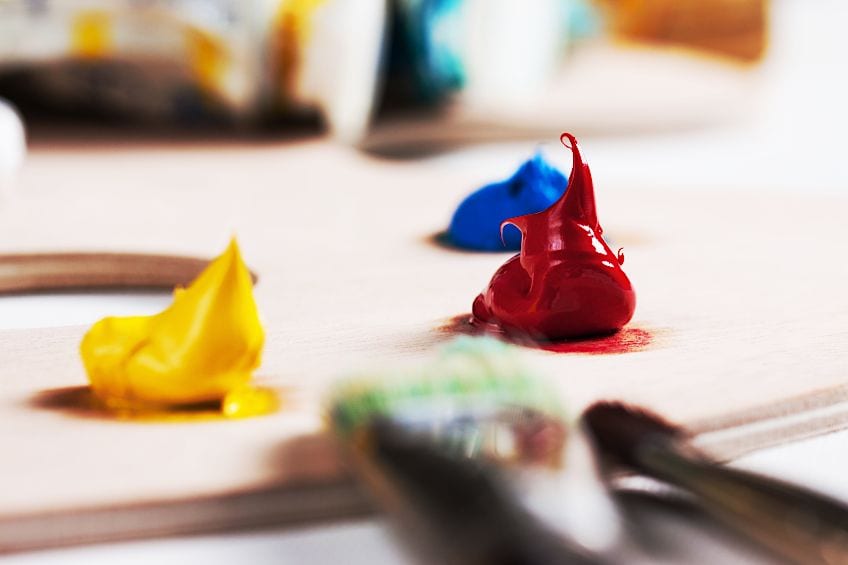
When it comes to cleaning up when you are finished with your artwork, then you will be relieved to hear that they are both easy to clean, and they both need only a little bit of soap and water. Gouache paint is a naturally made paint, whereas acrylic is synthetically made, so when it comes to toxicity, gouache paint is the lesser of the two.
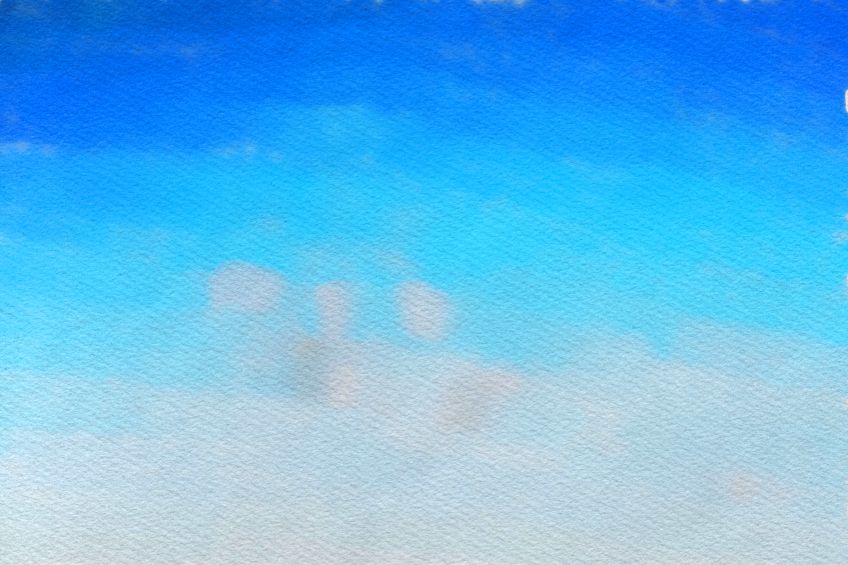
Acrylic Gouache Explained
What is acrylic gouache? If you know what the binder for acrylic paint is, then you will know what the binder for gouache paint is because they are one and the same. Acrylic gouache was designed for those that love to work with paints like acrylics because the consistency is easy to master your skills with. By working with acrylic gouache, you get all the same benefits as acrylic paints like the easy-to-use nature of the paint, as well as the fast-drying abilities.
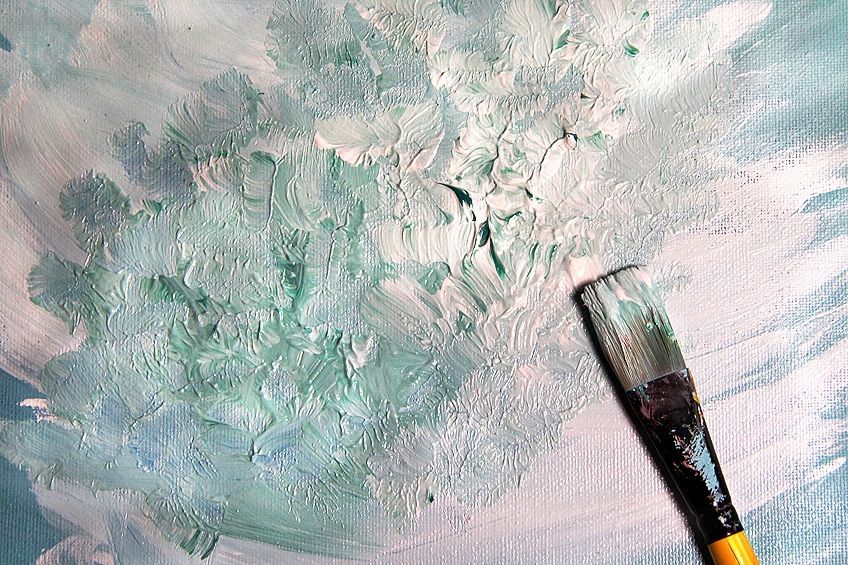
The only downside with acrylic gouache is that once it is dry, it is dried like acrylic paint, meaning there is no reactivating the paint to rework an area where you notice a mistake. The typical gouache is useful in this way, but that does not lower the quality of the painting. In fact, this can work for some in so many different ways.
What is acrylic gouache packaged in? Well, you can either buy this medium in tubes, or you can purchase tubs of the paint. An added benefit of using acrylic gouache over traditional gouache is that there is no mixing needed to activate the paint, you can use the paint directly from either the tube or the tub – depending on which you bought.
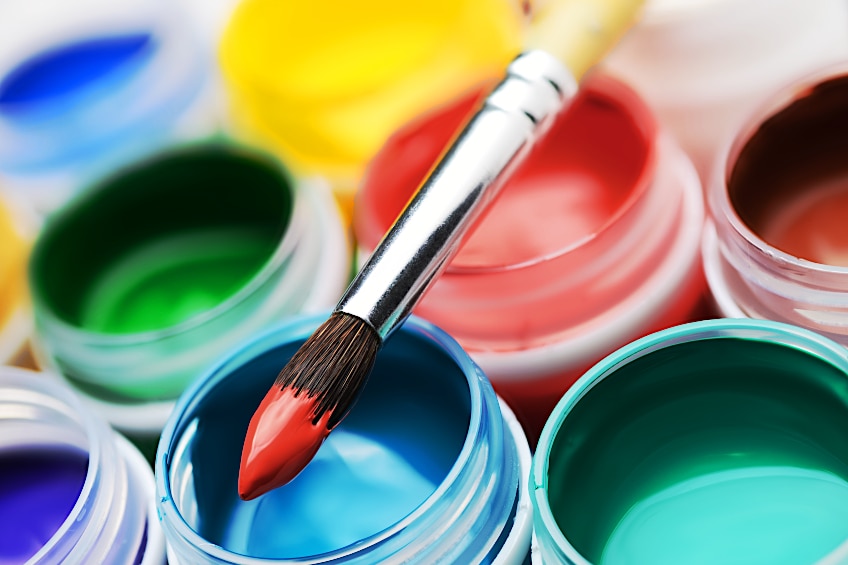
Illustrators love to use acrylic gouache paint for various different types of illustrations for books and comics. Fine artists will also love to use acrylic gouache paint when the artwork calls for it. Interior designers or even graphic designers who like to make their art with pencils and paint before it goes digital, love to use acrylic gouache paint for the versatility of the paint is vast.
One thing to remember, when it comes to working with acrylic gouache paint, it has been found amongst many different styled artists that if you mix brands in one painting, the effects will not be as desirable. It has been suggested by many professionals to use one brand and stick to the one you chose throughout one painting because they each have different finishes.
Frequently Asked Questions
Is Gouache Watercolor?
Watercolor gouache is the typical gouache that most gouache paint artists use. It is similar in appearance to watercolor paints, but the consistency is creamier than watercolor paints. The appearance of the paint when it is dry is matte, with a slightly opaque finish.
What Is Gouache Paint Used For?
If you are a graphic designer who likes to make physical art before they make their designs digital, you might be familiar with gouache paint already. Otherwise, artists who like to make illustrations and portraits of people on the go, or possibly a comic illustrator, or illustrators in general prefer using gouache
What Is Acrylic Gouache?
Acrylic gouache is a unique paint medium. It will have water-resistant qualities, like acrylic paint does, but it will dry to be more opaque than acrylic paints, and it will look more similar to the aesthetic of watercolor paints.
Is Cleaning Up Acrylic and Gouache Easy?
Water-based paints are always much easier to clean up because they only need a little water and some basic soap. Luckily, acrylic and gouache paint are both water-based, so this means the clean-up is so much easier.
Larissa Meyer is a 32-year-old mother from Michigan and creative spirit since childhood. Her passion for painting and drawing has led her to an education as an illustrator and a career as a freelance graphic designer. She has a Bachelor of Fine Arts in Illustration and a degree in Graphic Design. Larissa is a talented artist who is able to master a wide range of styles and techniques to bring her artistic vision to life. Her greatest passion is currently fluid painting and epoxy resin art. Larissa’s love for art and her knowledge and experience in illustration make her the perfect Creative Director for our fluid-painting.com team. She is the creative head of our team and shares her passion and knowledge with our community through articles and tutorials.
As a mother of a 2-year-old daughter, Larissa also understands the importance of fostering creativity in early childhood. She uses her experience and knowledge to help other parents inspire their children and develop their artistic skills as well.
Learn more about Larissa Meyer and about us.

